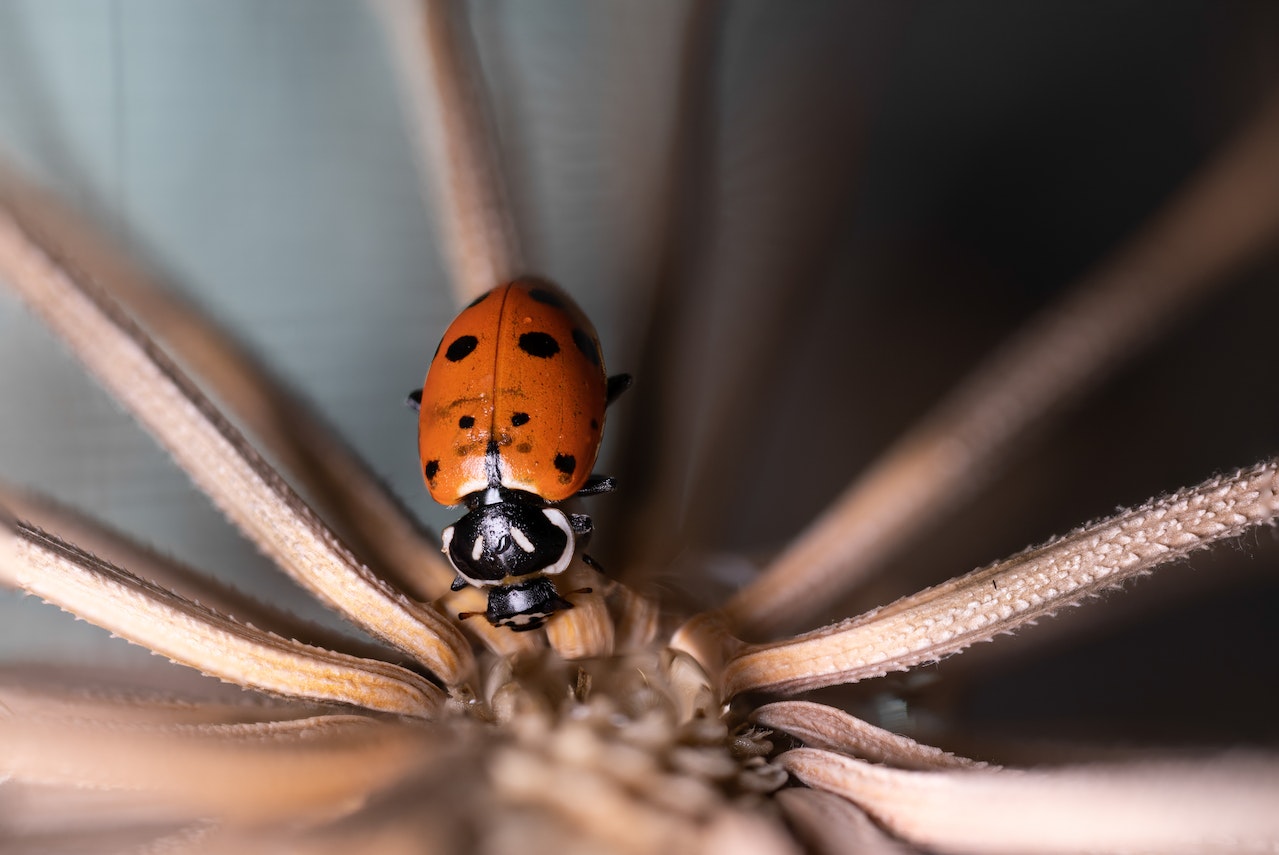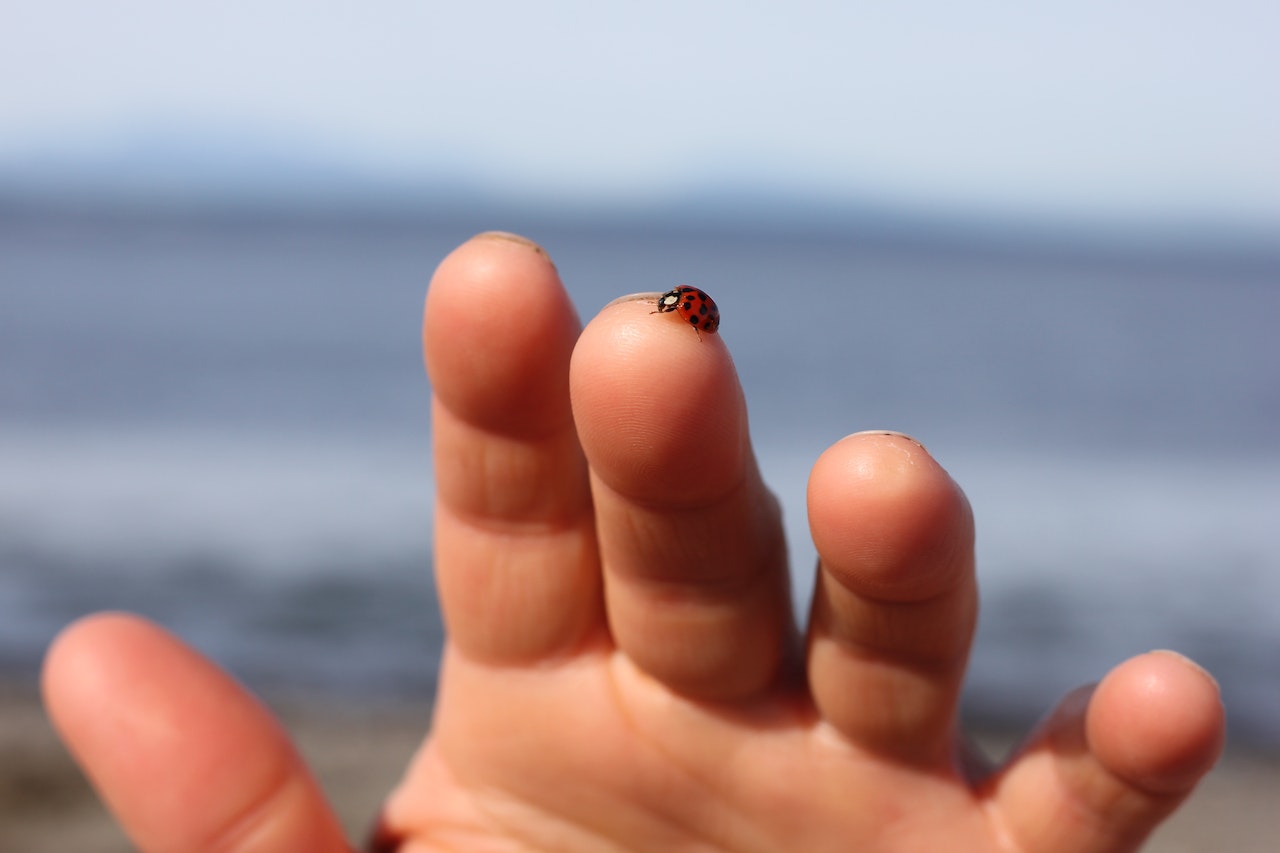Lady Bugs Meaning - A Symbol Of Luck
But beyond their reputation as a symbol of luck, ladybugs have a fascinating history and play an important role in the ecosystem. In this article, we'll explore everything you need to know about lady bugs meaning, from their cultural significance to their biology and behavior.
Author:Michele SievertReviewer:Sonia RavenwoodMay 04, 202351 Shares1.4K Views

Ladybugs, also known as ladybirds or lady beetles, are one of the most popular and beloved insects in the world. These small, brightly-colored beetles are often associated with good luck, and their presence is considered a sign of good fortune in many cultures.
But beyond their reputation as a symbol of luck, ladybugs have a fascinating history and play an important role in the ecosystem. In this article, we'll explore everything you need to know about lady bugs meaning, from their cultural significance to their biology and behavior.
Lady Bugs Meaning And Cultural Significance
Ladybugs have been admired and celebrated for centuries across many different cultures. In many European countries, ladybugs are known as "Our Lady's beetle," a reference to the Virgin Mary, and they are considered a symbol of protection and good fortune. In Russia, ladybugs are associated with love and are often given as gifts to newlyweds.
Ladybugs In Folklore And Mythology
Ladybugs have been a part of human culture for centuries, appearing in folklore and mythology around the world. In some cultures, ladybugs are seen as symbols of good luck and protection.
In others, they are associated with love and romance. Ladybugs are also linked to religious and spiritual beliefs, appearing in Christian, Native American, and other traditions.
For example, in many European cultures, ladybugs are called "Our Lady's beetle," referring to the Virgin Mary. According to legend, ladybugs were sent by the Virgin Mary to protect crops from pests and to bring good luck to farmers.
In other cultures, ladybugs are associated with love and marriage. In Sweden, it is believed that if a woman catches a ladybug and lets it crawl across her hand, she will be married within a year.
Ladybugs In Art And Literature
Ladybugs have also played a significant role in art and literature throughout history. In Renaissance art, ladybugs were often depicted as a symbol of the Virgin Mary.
They also appeared in medieval illuminated manuscripts and in the decorative arts of the Art Nouveau movement in the late 19th and early 20th centuries.
In literature, ladybugs have appeared in numerous stories and poems, often as symbols of luck, protection, or love. One famous example is the children's book "The Grouchy Ladybug" by Eric Carle, which tells the story of a crabby ladybug who learns the importance of sharing and cooperation.
Ladybugs have also appeared in films like "A Bug's Life" and "James and the Giant Peach," as well as in various animated series and video games.
Ladybugs In Traditional Medicine
Ladybugs have also been used in traditional medicine for centuries, particularly in Chinese and Ayurvedic medicine. Ladybug powder has been used as a treatment for a range of ailments, including toothaches, gastrointestinal issues, and skin conditions.
Ladybugs were also used in folk remedies to help prevent and treat infections, and their blood was thought to have healing properties.
While the use of ladybugs in traditional medicine is not as common today, some practitioners still use ladybug-based remedies in certain contexts.
However, it is important to note that consuming or using ladybugs in any form can be dangerous, as they may carry diseases or toxins.
Ladybug Biology And Behavior
Ladybugs belong to the family Coccinellidae, which includes over 5,000species of beetles. These small insects range in size from 1 to 10 millimeters and are characterized by their bright, spotted bodies. Ladybugs have a distinct round shape, with a dome-like back and a flat underside.
The body of a ladybug is divided into three segments: the head, the thorax, and the abdomen.
The head contains the eyes, antennae, and mouthparts, while the thorax is responsible for locomotion and contains the legs and wings. The abdomen is where the reproductive and digestive organs are located.
Ladybugs also have specialized structures called elytra, which are hard, protective covers that protect the wings and body. When a ladybug takes flight, it raises its elytra to expose its wings and take off.
Life Cycle Of A Ladybug
Ladybugs go through a complete metamorphosis, meaning they have four distinct life stages: egg, larva, pupa, and adult.
Female ladybugs lay their eggs in clusters on leaves or stems near a source of food. The eggs hatch into larvae, which have long, spiky bodies and feed on small insects like aphids and mites.
After several weeks, the larva will pupate, forming a hard, protective shell around its body. Inside the pupa, the larva undergoes a dramatic transformation, turning into an adult ladybug. The adult emerges from the pupa and begins its life as a fully-formed beetle.
Ladybug Behavior And Diet
Ladybugs are known for their voracious appetite for small insects like aphids, mites, and scale insects. They are particularly beneficial to gardeners and farmers, as they can help control pest populations and reduce the need for harmful pesticides.
In addition to their feeding habits, ladybugs are also known for their social behavior. Ladybugs often gather in large groups during the winter months to hibernate together.
This behavior is known as diapause, and it allows ladybugs to conserve energy and survive the cold winter months.
Ladybugs are also capable of reflex bleeding, a defense mechanism in which they secrete a foul-tasting liquid from their leg joints to deter predators.
While this liquid is harmless to humans, it can be effective at warding off predators like birds and other insects.
Ladybugs In The Ecosystem
Ladybugs play an important role in the ecosystem, serving as both predators and prey. As predators of small insects like aphids and mites, ladybugs help control pest populations and reduce the need for harmful pesticides.
Ladybugs are also a food source for many other animals, including birds, spiders, and other insects. Ladybugs are an important part of the food web and their presence can indicate a healthy ecosystem.
However, like many other insects, ladybugs are vulnerable to environmental threats like habitat loss and pesticide use. Conservation efforts are underway to protect ladybug populations and ensure their continued presence in the ecosystem.
The Science Of Ladybug Colors And Patterns
Ladybugs are known for their bright, eye-catching colors and distinctive spotted patterns. But have you ever wondered how these colors and patterns are determined? The answer lies in the genetics of ladybug coloration.
Ladybugs have a complex system of genes that control their coloration. The genes responsible for ladybug coloration are known as pigmentation genes, and they determine the type and distribution of pigments in the ladybug's exoskeleton.
Different pigmentation genes are responsible for different colors and patterns in ladybugs. For example, the gene responsible for red coloration in ladybugs is called the dopa decarboxylase gene, while the gene responsible for black spots is called the black gene.
The Function Of Ladybug Colors And Patterns
While ladybug coloration is certainly aesthetically pleasing, it also serves an important function in the natural world.
The bright colors and distinctive patterns of ladybugs are actually a form of aposematism or warning coloration.
Ladybugs produce a defensive chemical called pyrazine, which makes them distasteful to predators like birds and lizards. By advertising their distastefulness with bright colors and bold patterns, ladybugs can deter predators and avoid being eaten.
In addition to aposematism, ladybug coloration can also serve as camouflage. Some ladybugs have patterns that blend in with their environment, making them harder to spot by predators. This camouflage helps ladybugs avoid being eaten and increases their chances of survival.
Environmental Factors And Ladybug Coloration
While genetics plays a major role in ladybug coloration, environmental factors can also influence the colors and patterns of ladybugs.
Temperature, humidity, and other environmental factors can all affect the expression of pigmentation genes in ladybugs.
For example, ladybugs that are raised at high temperatures tend to have lighter colors than ladybugs raised at cooler temperatures. Similarly, ladybugs that are exposed to higher levels of ultraviolet light may develop darker colors than those that are not.
Ladybug Coloration And Evolution
The evolution of ladybug coloration is a fascinating topic for scientists studying the process of natural selection. Ladybug coloration has evolved over millions of years in response to changing environmental pressures and the need to avoid predators.
For example, some species of ladybugs have evolved to mimic the coloration of other, more distasteful insects in order to avoid being eaten.
This process, known as Batesian mimicry, allows the ladybugs to fool predators into thinking that they are toxic or unpalatable.

Ladybug Symbolism - What Does Seeing a Ladybug Mean?
Ladybugs In Myth And Legend
Ladybugs have been a symbol of good luck and fortune in many cultures around the world for centuries. In many European countries, it is said that if a ladybug lands on you, you will have good luck.
In some cultures, it is believed that the number of spots on a ladybug's back can indicate how many years of good luck you will have.
Ladybugs have also been associated with love and romance in some cultures. In Germany, for example, it is said that if a ladybug lands on a single woman's hand, she will soon marry. In other cultures, ladybugs are seen as a symbol of fertility and are associated with the goddess of love and beauty.
Ladybugs In Religion
In Christianity, ladybugs are sometimes associated with the Virgin Mary. According to legend, the red color of the ladybug's wings is symbolic of the red cloak worn by the Virgin Mary.
In some Christian art, the ladybug is depicted as a symbol of protection and divine intervention.
In some Native American cultures, ladybugs are also seen as a symbol of good luck and protection. Some tribes believe that ladybugs can bring rain, while others see them as a sign of good health and prosperity.
Ladybugs In Literature
Ladybugs have been featured in a number of works of literature throughout history. In Shakespeare's play "A Midsummer Night's Dream," for example, the character Bottom refers to himself as a "ladybird." In Beatrix Potter's "The Tale of Mrs. Tittlemouse," a ladybug named Ladybird helps the main character clean her house.
Ladybugs have also been the subject of children's books, such as "The Grouchy Ladybug" by Eric Carle. In this book, a grumpy ladybug learns about the importance of kindness and sharing.
Ladybugs In Art
Ladybugs have been a popular subject for artists throughout history. In Japanese art, ladybugs are often depicted as a symbol of good luck and protection. In Renaissance art, ladybugs were sometimes included in paintings as a symbol of the Virgin Mary.
Today, ladybugs continue to inspire artists in a variety of mediums, from painting and sculpture to jewelry and clothing design.
People Also Ask
What Is The Spiritual Meaning Of Ladybugs In Native American Culture?
Ladybugs are seen as a symbol of protection and good luck.
In Which Country Is The Ladybug Considered A Sign Of Impending Good Weather?
In Germany, a ladybug is believed to be a sign of good weather.
What Is The Symbolism Of The Number Of Spots On A Ladybug's Back?
In some cultures, the number of spots on a ladybug's back is believed to indicate the number of years of good luck one will have.
Are There Any Negative Connotations Associated With Ladybugs In Some Cultures?
In some cultures, ladybugs are seen as a symbol of death or impending danger.
What Do Ladybugs Symbolize In Chinese Culture?
Ladybugs are considered a symbol of good luck, happiness, and prosperity in Chinese culture.
Conclusion
Lady bugs significant cultural and symbolic meanings across various cultures and time periods. From their association with good luck and fortune to their spiritual significance and use in art and literature, ladybugs have been celebrated and revered for centuries.
Whether seen as a symbol of love, fertility, or protection, the lady bugs meaning continues to inspire and fascinate people around the world.
Their importance in folklore and mythology serves as a testament to the enduring fascination with these charming and colorful creatures.

Michele Sievert
Author
Michele Sievert is an accomplished writer specializing in astrology, horoscopes, zodiac signs, and spirituality. With a wealth of knowledge and a passion for helping others explore the mysteries of the universe, Michele's articles provide readers with profound insights and practical wisdom.
Grounded in her background in astrology and a commitment to authenticity, Michele's writing offers a unique blend of ancient wisdom and contemporary perspectives.

Sonia Ravenwood
Reviewer
Sonia Ravenwood is a versatile writer with a deep fascination for the mystical and spiritual realms. Through her exploration of magic, spirituality, and numerology, Sonia seeks to unravel the complexities of existence and offer readers insights into the deeper truths of life.
With a background in esoteric studies and a commitment to authenticity, Sonia's articles provide a balanced blend of ancient wisdom and modern perspectives. Beyond her writing, Sonia enjoys immersing herself in nature, practicing mindfulness, and continually expanding her understanding of the interconnectedness of all things.
Her presence exudes an air of enchantment, drawing others into her mystical realm. Sonia's mastery of the occult arts empowers her to navigate the delicate balance between light and dark, harnessing ancient wisdom to guide her spiritual path.
With a keen understanding of lucky and unlucky numbers, Sonia reveals the intricate dance between destiny and free will. She embraces the power of numbers as windows into the soul, deciphering their hidden messages and unlocking the mysteries of the universe.
Latest Articles
Popular Articles
